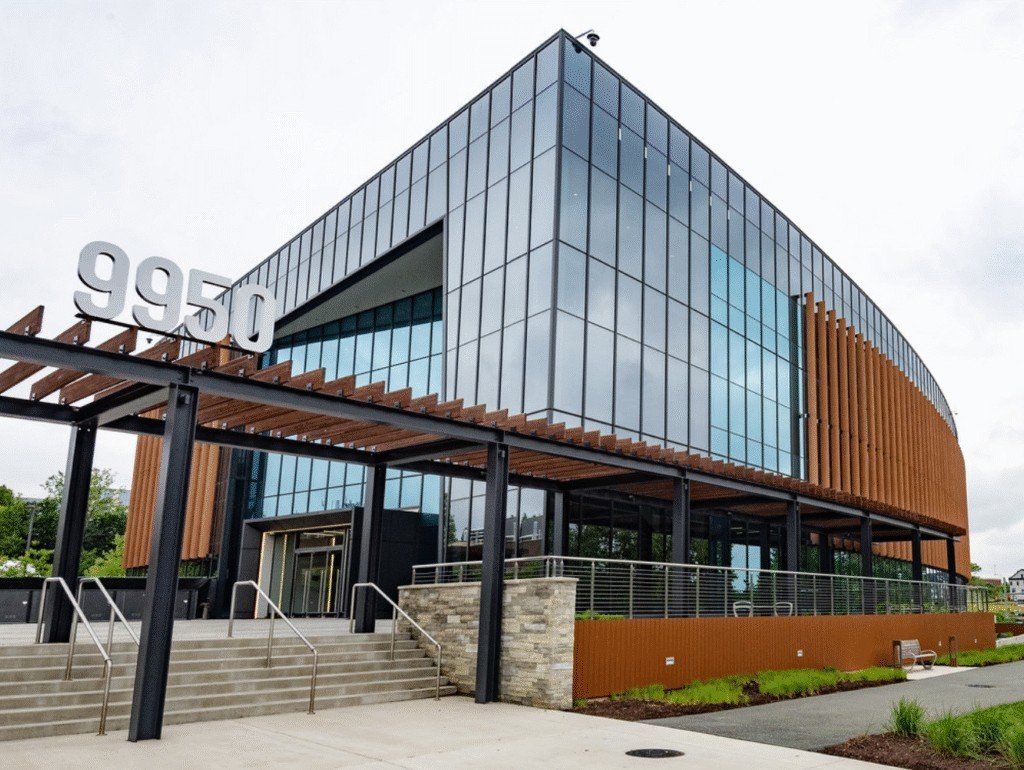Cells continually shed extracellular vesicles (EVs), which are membrane-wrapped bubbles containing proteins, lipids and nucleic acids. In addition to their normal functions in cell signaling and response, EVs offer great promise for drug delivery (Cheng & Hill, 2022). They possess key advantages over synthetic chemical agents, including low immunogenicity and high biocompatibility.

For example, EVs derived from mesenchymal stem cells are known to be anti-inflammatory (Lo Sicco et al., 2017). With their preferential ability to distribute in the body and cross tissue barriers, EVs can also deliver therapeutics to hard-to-reach biological sites, thus expanding the applicability of EV-based medicine.
By directly fusing with the cell membrane, EVs may escape endosomal destruction by delivering therapeutic payloads with higher efficacy. Three Asia-Pacific companies, in particular are making headwinds in EV-based medicine for drug delivery.
AI-powered EV design and manufacturing
Shiftbio from South Korea is revolutionizing next-generation drug delivery systems using natural drug delivery platforms, including natural nanoparticle (NNP) design and manufacturing technology. The company was co-founded in 2020 by In-San Kim, PhD, from the KU-KIST Graduate School of Converging Science and Technology.
Kim’s lab specializes in enhancing EV capabilities through surface modification techniques to improve targeting and delivery efficiency, specifically for cancer immunotherapy applications. Most notably, his lab was among the first to express viral fusogens on EV surfaces, which maximize their cell membrane fusion capabilities. This innovation enables direct drug delivery through cell membrane editing and cytoplasmic fusion.
Shiftbio has two core capabilities. The first is the NNP-Design AI platform, an AI-powered NNP design engine that systematically develops optimized drug delivery materials while reducing risks associated with discovering and validating novel delivery vehicles. The second is large-scale NNP manufacturing that provides superior yield, exceptional purity, and stringent batch-to-batch consistency, essential for successful clinical translation.
platform, an AI-powered NNP design engine that systematically develops optimized drug delivery materials while reducing risks associated with discovering and validating novel delivery vehicles. The second is large-scale NNP manufacturing that provides superior yield, exceptional purity, and stringent batch-to-batch consistency, essential for successful clinical translation.
Leveraging these technologies, Shiftbio has developed a lead candidate, SBI-102, that utilizes human bone marrow-derived mesenchymal stem cell-engineered Signal Regulatory Protein Alpha-NNPs to eliminate liver cancer and promote liver tissue regeneration (Kim et al., 2025). With its dual mechanisms by reprogramming macrophages toward inflammation resolution to phagocytose cancer cells and harnessing cargo in EVs to promote liver regeneration, SBI-102 has secured Orphan Drug Designation (ODD) from the U.S. FDA, underpinned by comprehensive preclinical efficacy data.

Although promising, Kim says that there are still challenges to overcome in EV medicine. While the advantages of EVs as drug delivery vehicles are recognized, there remains a substantial knowledge gap regarding their fundamental mechanisms. Deeper basic research is essential to support the development of truly innovative therapeutics. Beyond the conventional sub-200nm EVs, a diverse range of cell-derived micro and nanoparticles exist.
Recent research indicates that the corona formed around EVs significantly affects their in vivo distribution patterns. These findings highlight the importance of expanding research in these directions to understand how EV species accumulate different coronas and how that impacts their biology.
“Looking ahead to the next five years, the most critical development will be the emergence of EV-specific therapeutics that demonstrate unique capabilities impossible with conventional drug delivery systems. With over 180 global EV-based clinical trials underway and some advancing to Phase III, EVs are transitioning from future medicine to an imminent therapeutic reality. Clinical validation of these therapeutics in medical settings will be paramount to establishing EVs as a transformative drug delivery platform,” says Kim.
Hybrid EV for cancer immunotherapy
Beijing Evac Intell Biotechnology, founded in January 2023, is a high-tech company incubated through the National Center for Nanoscience and Technology (NCNST) in China. The company has developed a hybrid membrane fusion technology that inherits the properties of two parental cell membranes–one from bacteria and one from patient tumor–to establish a personalized tumor nano-vaccine platform (Liu et al., 2024).
Guangjun Nie, PhD, at NCNST. adds that bacterial-derived membrane vesicles contain a variety of naturally structured components such as proteins, polysaccharides, and nucleic acids, which can serve as multivalent adjuvant components to mimic pathogen invasion mechanisms and activate the body’s innate immune response.
There are some distinct advantages of using bacterial membrane in hybrid EVs for cancer immunotherapy. First, bacterial membrane-derived EVs can enhance the recognition and efficient uptake of antigens by dendritic cells, significantly improving immunogenicity and antigen presentation efficiency. Second, bacteria proliferate rapidly and are easily genetically modified, hence allowing for engineered modifications of membrane components to expand antigen-loading strategies.
Finally, bacterial fermentation processes are well-established, enabling the rapid industrialization and production of bacterial membrane vesicle products.
The outer membrane of bacteria contains lipopolysaccharide, which acts as an endotoxin and may trigger severe immune responses, posing a potential risk for the use of bacterial membrane vesicles in humans. Importantly, bacterial membrane composition is highly complex, and vesicles derived from different bacterial species can activate entirely distinct innate immune signaling networks, which is the core for effective antitumor immune cycle. On the other hand, they may carry the potential risk of inducing a cytokine storm.
“It was only after through multiple optimization steps that we found the best methods for enzymatic digestion and small-molecule interference. With our methods, we successfully removed extra outer membrane lipopolysaccharide while preserving the molecular composition and native conformation of the cytoplasmic membrane,” says Nie.

As of now, Beijing Evac Intell Biotechnology has developed a hybrid-membrane-based personalized tumor vaccine that is undergoing a single-center, open-label, dose-escalation investigator-initiated trial. More than 10 rare-cancer patients suffering from adenoid cystic carcinoma and neuromyelin sheath tumor have completed treatment across low-, medium-, and high-dose groups, with no significant adverse events reported.
“The vaccine successfully activated adaptive immunity in patients, and in one case, rapid tumor regression was observed in pre-existing lung lesions,” adds Nie.
The company is focusing its effort on developing systemic immunomodulatory therapeutic vaccines for rare tumors by using autologous tumor cell membrane antigens to reflect comprehensive tumor antigen profiles – a strategy to overcome tumor heterogeneity. By innovatively employing bacterial inner membrane vesicles as multi-adjuvant components instead of single adjuvants, this technology mimics pathogen invasion mechanisms to activate multi-pathway innate immunity, significantly enhancing antigen presentation as well as effector T-cell differentiation and proliferation.
Nie says that their approach is a first-of-its-kind personalized therapeutic strategy that is creating a novel drug modality with broad-spectrum applicability and patient accessibility, partially alleviating the current treatment dilemma of drug scarcity and lack of standard regimens.
Nevertheless, the team acknowledges that there are still challenges to be overcome including standardization as heterogeneity in bacterial vesicles arising from different species sources and preparation methods (e.g., ultracentrifugation vs. chemical treatment) may compromise therapeutic consistency. There could also be anti-carrier/pre-existing immunity that may cause rapid clearance of the EV medicine by phagocytic cells upon repeated administration, rendering treatment ineffective.
Finally, there is a need for more targeted tissue delivery through EV surface modification. To overcome these challenges, the company is pursuing synthetic biology to modularly regulate vesicle components, and further enhancing their manufacturing workflow to ensure standardization.
EVs to treat oral diseases
The lab led by Pingping Han, PhD, at the University of Queensland in Australia, specializes in EVs derived from dental cells located in periodontium (gum tissues), including periodontal ligament cells (hPDLCs), osteoblasts (hOBs), and gingival fibroblasts (hGFs). These EVs show unique regenerative and immunomodulatory properties, especially in the context of periodontal tissue engineering. Han’s group develops these “cell-free” regenerative EVs to treat periodontal and craniofacial diseases, as well as to exploit salivary EVs as diagnostic biomarkers.

In their recent work, they employed 3D bioprinting and injectable hydrogels as delivery platforms to localize EVs for the treatment of gum disease (Han et al., 2024). Current in vitro and in vivo studies have shown that hOB-derived EVs (hOB-EVs) demonstrate superior bone regeneration outcomes compared to EVs from the other two cell types—effectively mimicking their parental osteogenic function.
The team is currently exploring commercialization pathways “aimed at translating our EV-based therapeutic and diagnostic technologies into clinical and commercial products,” says Han. Potential uses include personalized medicine, regenerative biomaterials, and non-invasive diagnostics. Nevertheless, Han agrees that to move EV-based medicine forward, scalability and targeting specificity of EVs need to be enhanced.
In addition, she adds that biofluids like saliva, blood, and urine contain EVs from both host and non-host sources, such as microbes. These non-host EVs complicate the isolation and analysis of host-derived EVs, potentially affecting diagnostic accuracy and biomarker specificity.
“Differentiating between these populations requires advanced analytical methods still in development,” points out Han. “Moreover, microbial EVs may impact immune responses and disease progression, adding complexity to their interpretation. In therapeutics, contamination by non-host EVs raises safety and immunogenicity concerns. Thus, effectively identifying and separating non-host EVs is essential for the progress of EV-based diagnostics and treatments.”
Connecting Asia-Pacific EV researchers
The Asia-Pacific researchers working on EV-based medicine are also well connected. Each year, the Society for Clinical Research and Translation of Extracellular Vesicles Singapore (SOCRATES), established in 2013, organizes the Asia-Pacific Societies for Extracellular Vesicles, bringing EV researchers from the region and globally to discuss topics ranging from therapeutic applications and manufacturing of EVs.
The Australia and New Zealand Society for Extracellular Vesicles (ANZSEV) was set up in 2020 to bring together academic researchers and industry folks interested in EV biology and translation. Other notable EV-related associations globally include the International Society for Extracellular Vesicles (ISEV) and UK Society for Extracellular Vesicles (UKEV).
The field of EV-based medicine is growing rapidly in translational and clinical developments. There has been ample evidence suggesting the advantages of EVs for drug delivery, and over the last decade there is a growing number of startups launching EV-based medicine for applications ranging from beauty enhancement to immunotherapy. With greater investment to improve the scalability and consistency of manufacturing, EV-based medicine is poised to shape therapeutics delivery in the near future.
Andy Tay, PhD, is a Presidential Young Professor in the department of biomedical engineering at the National University of Singapore (NUS) and Principal Investigator at Institute of Health Innovation & Technology and NUS Tissue Engineering Program. He is also a freelance science journalist.
References:
Cheng, L., & Hill, A. F. (2022). Therapeutically harnessing extracellular vesicles. Nature Reviews Drug Discovery, 21(5), 379–399. https://doi.org/10.1038/s41573-022-00410-w
Han, P., Raveendran, N., Liu, C., Basu, S., Jiao, K., Johnson, N., Moran, C. S., & Ivanovski, S. (2024). 3D bioprinted small extracellular vesicles from periodontal cells enhance mesenchymal stromal cell function. Biomaterials Advances, 158, 213770. https://doi.org/10.1016/j.bioadv.2024.213770
Kim, S., Kim, Y. K., Kim, S., Choi, Y.-S., Lee, I., Joo, H., Kim, J., Kwon, M., Park, S., Jo, M. K., Choi, Y., D’Souza, T., Jung, J. W., Zakhem, E., Lenzini, S., Woo, J., Choi, H., Park, J., Park, S.-Y., … Kim, I.-S. (2025). Dual-mode action of scalable, high-quality engineered stem cell-derived SIRPα-extracellular vesicles for treating acute liver failure. Nature Communications, 16(1), 1903. https://doi.org/10.1038/s41467-025-57133-w
Liu, G., Ma, N., Cheng, K., Feng, Q., Ma, X., Yue, Y., Li, Y., Zhang, T., Gao, X., Liang, J., Zhang, L., Wang, X., Ren, Z., Fu, Y.-X., Zhao, X., & Nie, G. (2024). Bacteria-derived nanovesicles enhance tumour vaccination by trained immunity. Nature Nanotechnology, 19(3), 387–398. https://doi.org/10.1038/s41565-023-01553-6
Lo Sicco, C., Reverberi, D., Balbi, C., Ulivi, V., Principi, E., Pascucci, L., Becherini, P., Bosco, M. C., Varesio, L., Franzin, C., Pozzobon, M., Cancedda, R., & Tasso, R. (2017). Mesenchymal Stem Cell-Derived Extracellular Vesicles as Mediators of Anti-Inflammatory Effects: Endorsement of Macrophage Polarization. Stem Cells Translational Medicine, 6(3), 1018–1028. https://doi.org/10.1002/sctm.16-0363
The post Asia-Pacific Startups Look to Drive Innovation in Extracellular Vesicle-based Medicine appeared first on GEN – Genetic Engineering and Biotechnology News.



